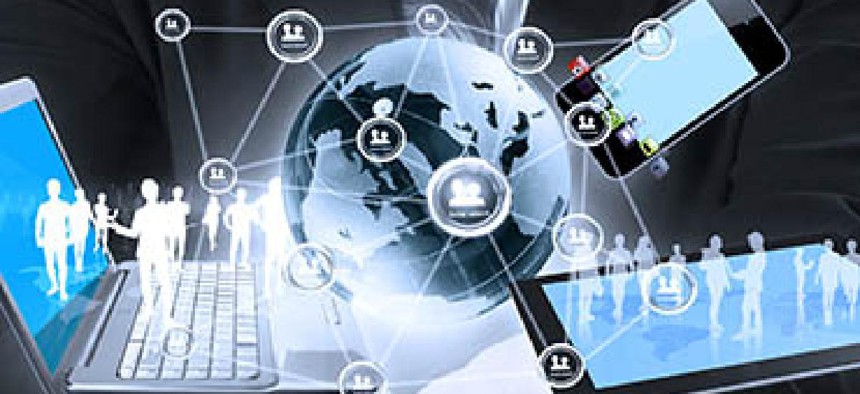How feds, military might deploy consumer IoT gear

Commercial technology and networks are set to play important roles as federal agencies and the Defense Department seek to harness the Internet of Things.

The government's old model for acquiring goods and services is becoming increasingly obsolete as everyday devices become networked, according to some experts.
Some estimates project that in the not-to-distant future, each square kilometer of a city will have 1 million Internet-connected devices, and John Pellegrino, deputy assistant secretary of the Army, said the service has an opportunity to take advantage of the ubiquity of networks and devices to enrich its sensory and data input. He made the comments during a keynote address at AFCEA Washington's Internet of Things Summit on May 17.
Given the sketchy availability of official networks, rapidly changing partnerships and cross-network communications requirements on the modern battlefield, Pellegrino said the Army must be highly adaptive in its technological approach. Soldiers equipped to handle complex environments will most likely be using some commercial technology, he added.
Certain civilian agencies share the military's need for cutting-edge, readily available and inexpensive IoT technologies, such as wrist-worn biometric sensors and clothing equipped with ballistic sensors. However, the federal government's traditional years-long technology development practices are falling by the wayside or hampering its use of IoT, said Wolf Tombe, CTO at Customs and Border Protection.
"We need consumer-grade technology" to handle some applications, he added. "The myth that consumer grade isn't good enough for government is poppycock."
Maj. Scott Cuomo, Marine Air-Ground Task Force planner and ground combat element integration officer at the U.S. Marine Corps, agreed. "We have to leverage commercial," he said.
He added that the Marines tried to develop a portable support system that was ruggedized for harsh environments, but it proved to be too bulky to move easily.
Cuomo said policies that were developed before the advent of the Internet are interfering with IoT adoption. The military limits the use of cell phones in the field because they can be used to track troops. However, that restriction seems antiquated given the fact that adversaries' cell phones have geospatial apps and location capabilities.
"If I'm rolling down a street" in a combat zone, with network streaming and cameras on every phone, "my adversaries probably already know where I am. Why preclude ourselves?"
He also said Syrian fighters have directed mortar fire using nothing but a geospatial app on a cell phone.
Old government rules tend to bog down advancing technology with bulky security and other requirements that are expensive and cumbersome, Cuomo said. Security shouldn't have to rely on a strict policy, he added, and more flexible rules would result in more effective training and other benefits.


